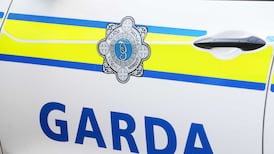A former paratrooper has rejected a suggestion that he could have fired the shots which killed a Catholic priest during disturbances in west Belfast almost 50 years ago.
Witness M1270, who has been granted anonymity, was giving evidence at Belfast Coroner’s Court about the events of August 9th in Ballymurphy.
Fr Hugh Mullan (38), was shot dead as he tended a wounded man, before Frank Quinn (19), was also killed, on an area of waste ground close to an army barracks at Vere Foster school that evening.
Appearing at a long-running series of fresh inquests into the deaths of 10 people in the area between August 9th and 11th, M1270 described his recollections of August 9th.
He was a member of anti-tank platoon of 2 Para Support Company at the time, and on his second tour in Northern Ireland.
Giving evidence via video link, M1270 described taking part in an ad hoc patrol to Mackie’s factory where the nightwatch man had been killed in a bomb attack.
Later that day, he said, the same patrol was sent to Springmartin flats, where he observed three gunmen in Moyard flats armed with rifles, and fired shots.
He said he assumed the gunmen were firing towards the Vere Foster school, but they switched their fire to his unit when they spotted them.
When asked whether he could not see where they were firing, he described being in a position against a wall, adding that to poke his head out to the left “would have been suicide”.
He also said he could not see the waste ground where the two men were killed.
M1270 recalled seeing a gunman crouching beside a metal dustbin and firing a shot at him which caused the dustbin to explode, before turning to the other two gunmen and seeing they had moved.
“I did not hit the gunman but he would have been hit with shrapnel,” he told the inquest, adding that he had not fired more than seven rounds in an exchange which lasted around two minutes.
Coming under fire again, but this time not being able to see the gunmen, M1270 said the patrol stepped back into cover and he gave a “watch and shoot” order to the other soldiers, before briefing the Officer Commanding on what had happened.
“There was firing going on all round us,” he added.
Later he said he reported he had fired seven shots, which was noted, and was given seven bullets to replace those he had shot.
“All weapons and ammunition were controlled,” he said.
Asked when he gave a statement about the incident, he said he was not asked to make a statement by the Royal Military Police.
“There were shooting incidents all over Belfast . . . there was so much going on, we just didn’t have time to think, we would go from one incident to another so eventually everything started to merge . . . after 47 years everything just merges in, you just get confused,” he told the inquest.
Asked who he believes shot Fr Mullan and Mr Quinn, M1270 responded: “It was difficult in as much as there was so much fire on that day, it would be almost impossible to hazard a guess.
“I have tried to be as honest as I can but anything else I could say about their deaths would be pure speculation on my part.”
Karen Quinlivan, counsel for the Mullan and Quinn families, said she does not accept gunmen were present.
She put it to M1270 that the shots which killed Fr Mullan could have been fired either by him or one of the soldiers with him.
“I disagree,” he responded, and suggested the priest had been killed in “cross fire”.
Ms Quinlivan questioned M1270’s recollection of events and put to him that he was trying to “distance himself” from events on the waste ground where the two men were shot dead.
She also queried his description of the position of IRA gunmen, putting to him that it “made no sense” and that he was “not telling the truth”.
M1270 rejected this.
“What I have told you is the truth,” he said.
Earlier another soldier, referred to as M1354, gave evidence in court behind a screen.
He was a member of 2 Para Support Company, and told the inquests that he has no memory of being in the area on August 9th.
M1354 rejected a suggestion by Ms Quinlivan that he was being “deliberately unhelpful”.
The Ballymurphy shootings came during a time of significant unrest, with rioting taking place across Northern Ireland following the introduction of internment in the early hours of August 9th.
Between August 9th and August 11th, 1971, 10 people died in shootings at a number of locations in west Belfast, a sequence of events which have become known as the Ballymurphy massacre.
Their families say they were shot by the British army, that each of them was unarmed and innocent, and that the shootings were unjustified.
Barristers for the Ministry of Defence (MoD) have argued soldiers only ever opened fire when they perceived they were under threat.
The narrative became further clouded when the loyalist Ulster Volunteer Force claimed their gunmen had also taken part.
Fresh inquests have been taking place at Belfast Coroner’s Court since November 2018.
Hearings will continue on Tuesday.
Presiding coroner Siobhan Keegan is expected to deliver her findings later this year. – PA









